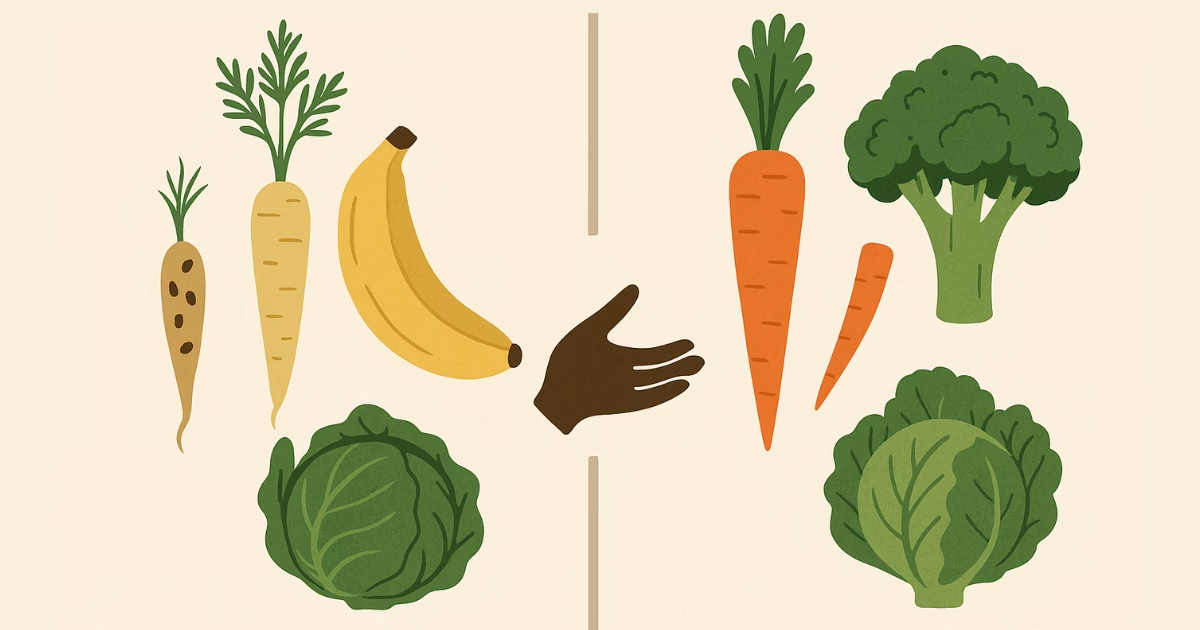Have you ever wondered if the vegetables you eat today are the same ones our ancestors ate thousands of years ago? Surprisingly, many of the vegetables we enjoy are not truly natural. They are actually the result of careful human work over many generations. In this article, we will explore what vegetables are created by man and how they came to fill our plates. From broccoli to carrots, the history of man-made vegetables is full of fascinating twists. These foods were shaped by farmers who wanted bigger harvests, better tastes, and plants that could survive tough weather. Understanding what vegetables are created by man gives us a fresh view of how much people have influenced what we eat. Let’s dive deep into the surprising origins of the vegetables we think of as “natural.”
What Vegetables Are Created by Man?
Vegetables created by man are not grown exactly as nature first made them. Instead, they are the result of a process called selective breeding. Farmers and growers over centuries chose plants with the best features—like bigger size, sweeter taste, or brighter colors—and grew them again and again. Over time, these changes created vegetables that were very different from their wild ancestors.
Unlike genetically modified organisms (GMOs) made in labs, these man-made vegetables were shaped naturally through careful selection, not by changing their DNA in a laboratory. Crops like broccoli, cauliflower, and carrots all started as wild plants. Ancient farmers selected the best ones until they became the delicious vegetables we know today.
So, when we talk about what vegetables are created by man, we are talking about plants humans improved over many generations to better suit our needs and tastes.
Why Were Vegetables Created by Humans?
Humans have always looked for ways to make food better. Thousands of years ago, wild plants were small, bitter, or even hard to eat. Early farmers started picking and planting the ones that tasted better, grew faster, or were easier to store. Over time, this led to big changes in how vegetables looked and tasted.
One reason vegetables were created by humans was survival. Bigger vegetables meant more food. Sweeter ones were easier to eat. Some were made to grow in harsh weather. Others were bred to resist pests or diseases. Farmers also wanted plants that stayed fresh longer. All these needs shaped the vegetables we have today.
It wasn’t about science in the beginning—it was trial and error. Generation after generation, people shaped vegetables to match what they needed, often without even realizing they were changing nature.
A List of Popular Man-Made Vegetables
Let’s take a look at some common vegetables that were actually created by humans. You might be surprised how different they were before!
Broccoli
Broccoli didn’t exist in the wild. It was developed from a wild cabbage plant through selective breeding by ancient Romans. They wanted a veggie with a thick stalk and clustered buds. Today’s broccoli is far from the original wild mustard it came from.
Cauliflower
Like broccoli, cauliflower is a member of the Brassica family. It was bred from wild cabbage for its pale, dense head. Over time, farmers picked plants with tighter and lighter-colored heads until the modern cauliflower was born.
Brussels Sprouts
These tiny cabbages were also created from wild cabbage. Farmers chose plants that formed small buds along the stem. After years of selection, we got the Brussels sprouts we know today.
Cabbage
Cabbage came from the same ancestor as broccoli and kale. It was bred for its big, round leafy head. Wild cabbage never had such a form—it’s a result of human influence.
Kale
Kale was created by encouraging leafy growth in wild cabbage. It became popular because it could grow in poor soil and had hardy leaves. Its rise in modern health trends is thanks to both its history and its nutrients.
Carrots
Wild carrots were thin, white or purple, and quite bitter. Dutch farmers selectively bred them for size, sweetness, and their now-famous orange color. Carrots today are much more pleasant to eat.
Corn (Maize)
Corn was developed from a wild grass called teosinte. Early versions were small and hard. Over thousands of years, people bred it into the large, juicy kernels we enjoy now. It’s one of the most striking examples of man-made crops.
Tomatoes
Wild tomatoes were tiny and sour. Farmers in South America and later in Europe selected bigger, redder, and sweeter varieties. The tomatoes on your sandwich today are the result of centuries of careful breeding.
Bananas
Yes, bananas are technically man-made too. Wild bananas were full of seeds and hard to eat. Humans bred them to be soft, sweet, and seedless. Modern bananas wouldn’t survive in the wild.
Beets, Lettuce, Spinach, and Others
Many leafy greens and root vegetables were shaped by people. Beets were bred for their sweetness and color. Lettuce was tamed from a bitter weed. Spinach was made more tender and less bitter over time. These everyday vegetables all show how humans have quietly shaped nature.
Are Man-Made Vegetables Genetically Modified?
This is a common question. The short answer is no—not always. Most man-made vegetables were created through selective breeding, not genetic engineering. Selective breeding means choosing plants with the best traits and growing them again. It takes years or even centuries.
Genetically modified organisms (GMOs), on the other hand, are made in a lab. Scientists insert specific genes into a plant’s DNA. This can make it grow faster or resist bugs. While some man-made vegetables are also GMOs today, most started as natural hybrids.
It’s important to understand the difference. Just because a vegetable is man-made doesn’t mean it’s unsafe or unnatural. It just means humans played a role in improving it.
Wild vs. Man-Made Vegetables
Man-made vegetables are usually bigger, sweeter, and more uniform than wild ones. That’s not always a bad thing. They’re easier to cook and store. But wild vegetables often have stronger flavors and more genetic diversity.
For example, wild carrots are tough and earthy, while farmed ones are sweet and soft. Wild tomatoes are tiny, but they pack a punch of taste. Man-made vegetables, though less intense, are more practical for everyday use.
There’s a balance between nature and need. And humans have walked that line for thousands of years.
Fun Facts About Man-Made Vegetables
- Broccoli, cauliflower, kale, cabbage, and Brussels sprouts all came from the same wild plant!
- The orange carrot was made in the Netherlands as a tribute to the Dutch Royal Family.
- Tomatoes were once feared in Europe and called “poison apples.”
- Bananas are cloned. Every store-bought banana is genetically almost identical.
- Corn wouldn’t survive without humans—it needs our help to reproduce.
Also Read: List of Non Man-Made Fruits and Vegetables You Should Know
Conclusion
So, what vegetables are created by man? The answer is: many of the ones we eat daily. From leafy greens to juicy fruits, human hands have shaped them all. Through selective breeding, trial and error, and sometimes even science, we’ve turned wild plants into food that feeds billions.
Understanding the origins of these vegetables doesn’t make them less natural—it makes them more fascinating. These crops are a perfect example of how humans and nature can work together.
Next time you eat a carrot or a banana, remember—you’re enjoying something nature started, but humans helped perfect.

Hi, I’m Shafy Ali – a curious mind and passionate writer at Celiac Magazine. I cover a little bit of everything, from everyday tips and how-tos to deeper dives into topics that spark conversation. I enjoy turning research into readable, relatable content that informs and inspires. Whatever the subject, I aim to keep it clear, engaging, and genuinely useful.

